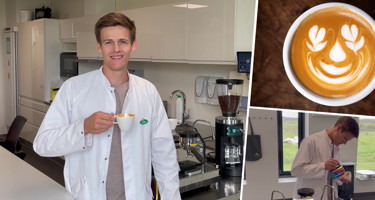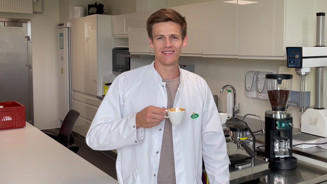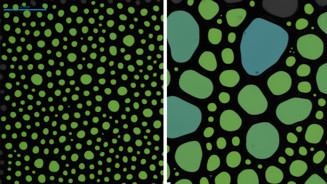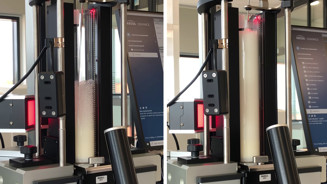
Millions of people have coffee every day, and a good share of those take their coffee with milk. But why do coffee and milk go so well together? Read on to find out and learn why coffee and milk isn’t just coffee and milk.
Milk and coffee go hand in hand like bread and butter, but have you thought about why the two work so well together?
We’ve asked our colleague Mads Eg Andersen, who’s an Associate Research Scientist at Arla’s Food Physics Science team and a former barista, to explain the following:
- Why do milk and coffee work so well together?
- How do you make milk foam?
- What kind of milk do you use for coffee?

Why do milk and coffee work so well together?
Milk and coffee are a naturally good match, because their flavours go well together. From a sensory perspective, coffee and milk have very complementary tastes.
Coffee is naturally acidic, while milk is more neutral in terms of acidity. So, when you add milk to your coffee, it neutralises a lot of the acidity in the coffee and reduces some of the bitterness, which makes it more pleasant to drink. Unless you like the acidity, of course. The lactose in the milk also adds sweetness to the coffee.
When you look beyond flavour, milk can also add to the drinking experience visually. It’s become very common at coffee shops and restaurants to add milk foam to the coffee, sometimes creating a bit of ‘latte art’ with the foam.
Depending on whether you add steamed milk to the coffee and depending on how much of it you add, you change the drink's viscosity, making the texture creamier.
Some of the most popular coffee and milk drinks are:
- Caffé Latte: Espresso with heated milk and a light layer of silky foam
- Cappuccino: Similar to caffé latte, but with more foam and slightly larger air bubbles in the foam
- Flat white: Espresso with heated milk and a minimum of foam
- Cortado: Espresso with a little bit of heated milk and silky foam
How do you make milk foam?
There are different ways of foaming milk and different tools to do it. Professional coffee makers – or baristas as they’re usually called – typically use steam to foam their milk.
Steaming milk is done by adding steam to the milk with a steam wand that warms the milk, while blowing a bit of air into it, which makes it creamier.
Steaming the milk also creates milk foam that will sit on top of the coffee. How much the milk foams depends on a number of factors, including how much air is blown into the milk as well as the temperature. The air is captured inside the milk, which makes it foamy.
You can see what milk foam looks like through a microscope below. The coloured circles are the air bubbles, while the dark lines are the milk.

What kind of milk do you use for coffee?
You can use whichever milk you prefer in your coffee. Skimmed milk, semi-skimmed milk and whole milk all work just fine with coffee. If you ask the same question to a barista, they would probably answer ‘whole milk’ because of its taste.
However, it’s actually a bit easier to foam milk if it contains less fat. Put very simply, that’s because the fat and protein is “competing” to cover the surface of the air bubbles.
Generally speaking, a milk with a high protein content will have a more stable foam, while milk with a high fat percentage will have a less stable foam. However, it’s important to have a good balance of both, so the milk foam is both creamy and stable.
To make life easier for baristas, we’ve made a so-called barista milk, which contains a bit more milk protein. This makes the milk easier to foam and the foam becomes more stable.
You can see the difference in “foamability” between regular milk and barista milk below.

When did we start adding milk to coffee?
Whether you’re into cortados, latte, cappuccinos or flat whites, milk in coffee comes in all shapes and sizes. But the two haven’t always been paired. So, who came up with the idea?
According to Thirst Magazine, the Dutch ambassador Johan Nieuhoff was the first person to add whole milk to coffee in 1660. On a journey to China, he was inspired by the Chinese elite in the Qing Dynasty who were drinking tea with milk.
Though Nieuhoff supposedly brought his new-found way of drinking coffee back home, the use of milk didn’t become popular until Polish aristocrat Jerzy Franciszek Kulczycki (also known as Georg Franz Kolschitzky) opened one of the first cafés in Vienna in Austria.
In 1683, the city was attacked by the Turkish army and later liberated thanks to information provided by Kolschitzky. As a reward, he received numerous bags of coffee beans abandoned by the Turkish.
Kolschitzky opened his café the year after and served the Turkish coffee. But as the Viennese didn’t appreciate the bitter taste, he found a way to filter his coffee and sweeten it with milk and honey.
It was also in the Viennese coffee houses that the ancestor of the cappuccino – the Kapuziner – a boiled coffee mixed with milk, whipped cream and spices later came to live.
The first baristas appeared in Italian coffee shops after the invention of the espresso machine in the beginning of the 20th century. Barista means “bartender” in Italian, and they were responsible for making espresso shots and later made the first steamed milk version of the cappuccino and the latte, according to The Coffee Club.
In the 1980s, the Italian baristas started drawing designs in the foam on top of their cappuccinos and lattes, and latte art quickly became a popular trend.
Today, baristas around the world are not only skilled in coffee brewing techniques and latte art. They are also able to identify different coffee bean varieties, roasts and origins, and understand the unique flavours and characteristics in coffee – and the milk or milk alternative that goes with it.